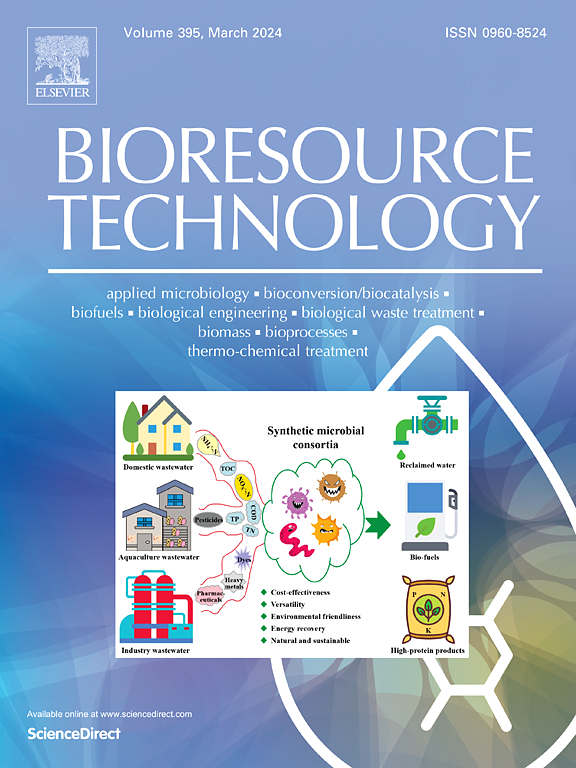Metabolic engineering of Neurospora crassa for the production of xylitol and ethylene glycol from xylose
IF 9.7
1区 环境科学与生态学
Q1 AGRICULTURAL ENGINEERING
引用次数: 0
Abstract
The use of pentose from lignocellulose is critical for economic production of biofuels and chemicals. In this study, a filamentous fungus, Neurospora crassa, was used to metabolize xylose and synthesize xylitol and ethylene glycol (EG). Firstly, xylulose kinase gene was knocked out to prevent excessive xylose usage for strain growth, resulting in 5.8 ± 0.3 g/L xylitol and 58.3 ± 2.6 mg/L EG. Through optimization, the xylitol accumulation in the hydrolysate containing xylose reached 62.0 ± 0.6 g/L. The expression of 6-phosphofructokinase increased EG production with a maximum titer of 102.1 ± 1.8 mg/L, proving that the strain synthesized EG through xylulose-1-phosphate pathway. Addition of furfural or hydrolysate, and oxygen-limited environment were conducive to the EG accumulation. Further optimized strain accumulated EG up to 2586.4 ± 198.9 mg/L. This study provided the evidence of an all-natural metabolic pathway for EG synthesis in N. crassa and also demonstrated a new chassis cell for synthesis of xylitol and EG from xylose-rich hydrolysate.

求助全文
约1分钟内获得全文
求助全文
来源期刊

Bioresource Technology
工程技术-能源与燃料
CiteScore
20.80
自引率
19.30%
发文量
2013
审稿时长
12 days
期刊介绍:
Bioresource Technology publishes original articles, review articles, case studies, and short communications covering the fundamentals, applications, and management of bioresource technology. The journal seeks to advance and disseminate knowledge across various areas related to biomass, biological waste treatment, bioenergy, biotransformations, bioresource systems analysis, and associated conversion or production technologies.
Topics include:
• Biofuels: liquid and gaseous biofuels production, modeling and economics
• Bioprocesses and bioproducts: biocatalysis and fermentations
• Biomass and feedstocks utilization: bioconversion of agro-industrial residues
• Environmental protection: biological waste treatment
• Thermochemical conversion of biomass: combustion, pyrolysis, gasification, catalysis.
 求助内容:
求助内容: 应助结果提醒方式:
应助结果提醒方式:


